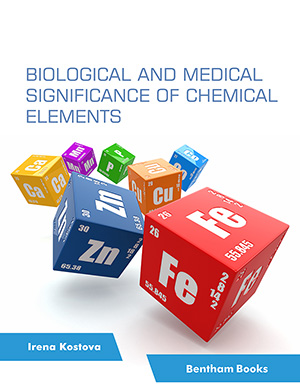Abstract
Background: In biological systems, lactoferrin (LF) is a crucial protein for protecting the body against diseases and pathogens that can affect both humans and animals. LF is a multifunction protein that binds to different surface receptors to stimulate the innate immune system. In diabetes, lactoferrin has a direct association with inflammation. The effects of inflammation interaction are unknown but reasonably could include changes in LF, a body protein whose changed concentration correlates with type 2 diabetes (T2D). The LF content in plasma has been used as a disease biomarker, and there is a need for convenient and reliable assays.
Method: An innovative indirect enzyme-linked immunosorbent assay (ELISA) was developed and applied to measure circulating lactoferrin levels as an inflammation marker in human samples, including healthy and type 2 diabetes.
Results: Under optimized conditions, the proposed indirect ELISA was evaluated and linearly responded to LF standards in a 0.05–0.5 μgmL−1 range. The limit of detection (LOD) was 0.05 μgmL−1, and a reliable limit of quantification (LOQ) was 0.240 μgmL−1.
Conclusion: The developed assay showed both specificity and reproducibility, indicating the utility of this indirect ELISA in LF monitoring. This study provides a definitive indirect ELISA protocol to detect various lactoferrin antigens with accurate, reliable, and reproducible data, and it could be applied for diagnosing lactoferrin-related diseases, such as type 2 diabetes. Our innovative approach provides a relatively cost-effective, sensitive, and precise way to assess LF in various human plasmas.
Keywords: Enzyme-linked immunosorbent assay (ELISA), plasma, immunoassay, lactoferrin (LF), inflammation, type 2 diabetes (T2D).
[http://dx.doi.org/10.1016/j.biochi.2008.05.015] [PMID: 18573312]
[http://dx.doi.org/10.1016/j.ijantimicag.2008.07.020] [PMID: 18842395]
[http://dx.doi.org/10.1007/978-1-4615-2417-5_51] [PMID: 8030492]
[http://dx.doi.org/10.1111/j.1699-0463.1999.tb01499.x] [PMID: 10598868]
[http://dx.doi.org/10.17221/1978-VETMED]
[http://dx.doi.org/10.1023/A:1002817226110] [PMID: 11240386]
[http://dx.doi.org/10.1016/j.lwt.2022.113426]
[http://dx.doi.org/10.1002/prot.25782] [PMID: 31295370]
[http://dx.doi.org/10.1016/S0166-3542(01)00195-4] [PMID: 11675140]
[http://dx.doi.org/10.9734/jpri/2021/v33i58A34129]
[http://dx.doi.org/10.1038/s41390-022-02136-2] [PMID: 35681097]
[http://dx.doi.org/10.1016/j.ebiom.2020.102834] [PMID: 32586758]
[http://dx.doi.org/10.1210/jc.2009-0215] [PMID: 19584176]
[http://dx.doi.org/10.3390/nu13082492] [PMID: 34444652]
[http://dx.doi.org/10.1016/j.atherosclerosis.2010.06.008] [PMID: 20598696]
[http://dx.doi.org/10.1016/j.jri.2023.104182] [PMID: 38159430]
[http://dx.doi.org/10.1016/j.snb.2022.133128]
[http://dx.doi.org/10.4155/bio-2018-0225] [PMID: 30475073]
[http://dx.doi.org/10.1080/14789450.2017.1388167] [PMID: 28974114]
[http://dx.doi.org/10.1016/j.peptides.2015.04.012] [PMID: 25908411]
[http://dx.doi.org/10.1373/clinchem.2009.127803] [PMID: 19850633]
[http://dx.doi.org/10.1021/acs.analchem.7b00261] [PMID: 28467701]
[http://dx.doi.org/10.20964/2018.08.47]
[http://dx.doi.org/10.3109/02713688908995757] [PMID: 2743797]
[http://dx.doi.org/10.1016/S0021-9673(01)01563-1] [PMID: 11883664]
[http://dx.doi.org/10.5740/jaoacint.15-0247] [PMID: 26821684]
[http://dx.doi.org/10.1016/j.foodchem.2019.125022] [PMID: 31253281]
[http://dx.doi.org/10.1016/j.chroma.2012.05.004] [PMID: 22613574]
[http://dx.doi.org/10.1081/IAS-120018471] [PMID: 12680609]
[http://dx.doi.org/10.1080/00313020410001672037] [PMID: 15203756]
[http://dx.doi.org/10.1007/BF00487997]
[http://dx.doi.org/10.1007/978-1-4939-2742-5_5]
[http://dx.doi.org/10.2144/btn-2018-0065] [PMID: 30089399]
[http://dx.doi.org/10.1128/jcm.18.3.463-468.1983] [PMID: 6630433]
[http://dx.doi.org/10.1371/journal.pone.0076176] [PMID: 24098437]
[http://dx.doi.org/10.4049/jimmunol.180.10.6868]
[http://dx.doi.org/10.1007/s00216-017-0779-7] [PMID: 29214534]
[http://dx.doi.org/10.1016/0952-7915(93)90018-N] [PMID: 8507406]
[http://dx.doi.org/10.1021/jf0002490] [PMID: 11052766]
[http://dx.doi.org/10.1016/0022-1759(83)90314-9] [PMID: 6317755]
[http://dx.doi.org/10.3109/00313028309061398] [PMID: 6856340]
[http://dx.doi.org/10.1371/journal.pone.0166138] [PMID: 27902700]































